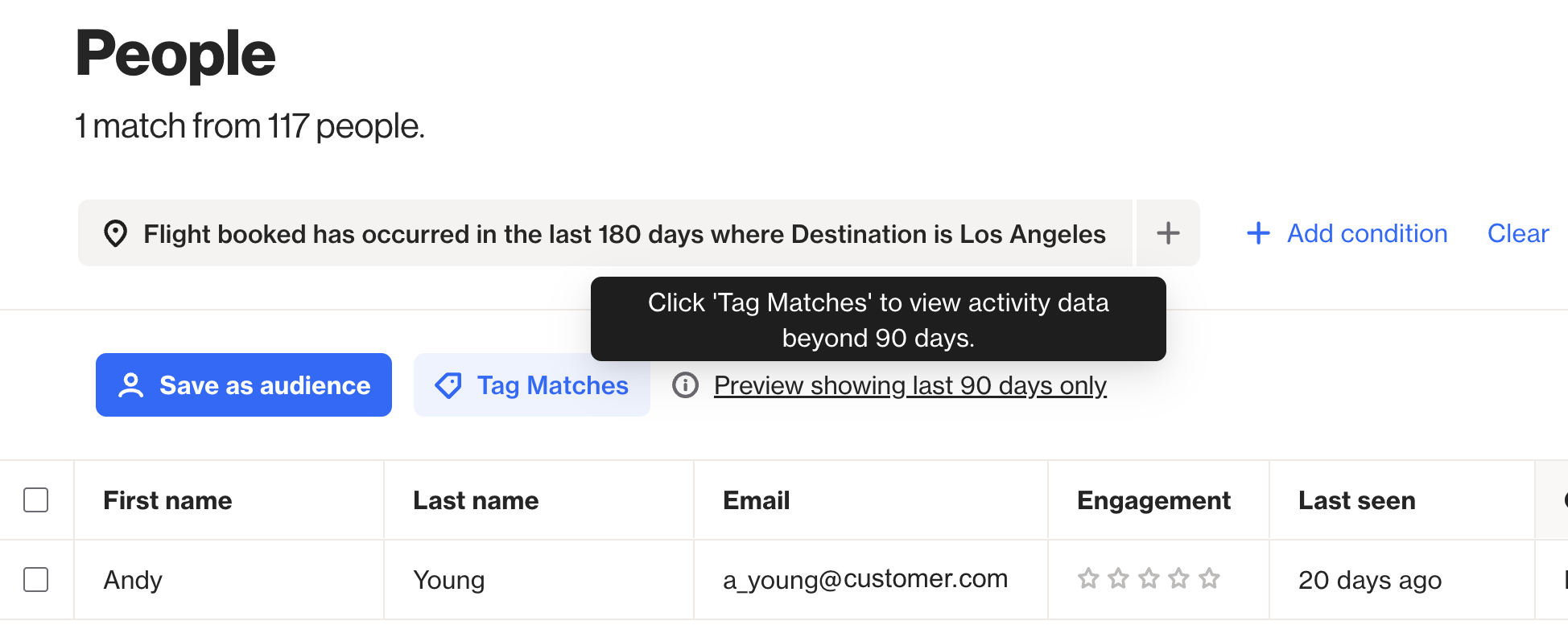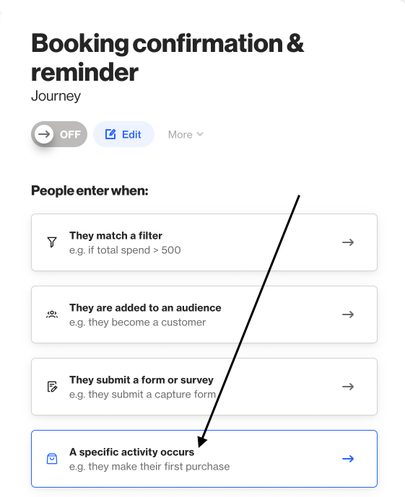Extend activity data storage
In some cases, storing an activity and its attribute data may be necessary for longer than 90 days. In such cases, Ortto provides a mechanism for customers to opt-in to store their select activity data for longer.
This is known as data retention.
When data retention is enabled, activity data is stored for the defined period to be referenced against.
Below, you will find an overview of what enabling data retention allows you to do in Ortto.
Reporting
Create a new report (snapshot or dynamic) against all your stored data.
You can reference stored activity data along with any attributes to create snapshot or dynamic reports, just as you can with 90-day activity data.
Learn more about creating reports.
CDP and filtering
Create a single-purpose filter of all your stored data.
As retained data is stored in a separate area of Ortto than 90-day data, this cannot be referenced in a dynamic filter.
However, retained data can be used to build out your filter conditions. Matching contacts can then be tagged and you can use that tag to create an audience, send those people a campaign, or export or archive them. Learn more about filtering by activity attributes beyond 90 days.

Audiences and automation triggers
As with CDP and filtering, retained data cannot be used to enter or exit contacts from playbook and journey campaigns as it is stored in a separate area of Ortto.
To work around this, you can either create a retention audience, or trigger your automations instantly using the activity Occurs option, then hold contacts in that journey for the required period you wish to reference activity attributes.
Retention audience
Use a retention audience to group people using specific activity attributes, such as:
Flight booked last occurred more than 180 days ago where destination is Los Angeles
Retention audiences are re-calculated daily. Learn more about data retention and audiences.
Journey activity retention
By default, Ortto will retain the activity that triggers a person into a Journey using the Occurs trigger for as long as that contact remains in the Journey:

The activity and attributes can then be referenced in merge tags and condition shapes throughout the journey.
Learn more about configuring data retention and managing data retention limits.
